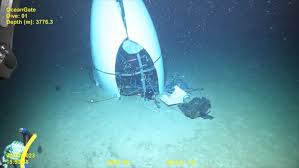
Introduction
The recent incident involving the Titan submersible, which tragically imploded during a dive to the Titanic wreckage, has raised significant concerns regarding the safety and technology associated with deep-sea exploration. This event not only underscores the risks inherent in such expeditions but also calls attention to the need for stringent safety measures in the submersible industry.
Details of the Incident
On June 18, 2023, the Titan submersible, operated by OceanGate Expeditions, embarked on a mission to explore the Titanic, situated approximately 3,800 meters beneath the North Atlantic. Approximately one hour and 45 minutes into the descent, communications were lost, raising alarms about the vessel’s safety. Attempts were made to locate the Titan, which ultimately ended in rescue efforts spanning several days. Sadly, on June 22, the U.S. Coast Guard confirmed that debris recovered from the ocean floor indicated the submersible had suffered a catastrophic implosion, resulting in the loss of all five passengers aboard.
This incident has drawn considerable media attention, prompting investigations into the design and construction of the Titan. The vessel was made from carbon fiber and titanium, materials that many experts now question in regard to their reliability under extreme ocean pressures. Since the incident, OceanGate has faced scrutiny in relation to safety practices and adherence to industry regulations.
Impact on Deep-Sea Exploration
While deep-sea exploration holds immense potential for scientific discovery and tourism, the Titan implosion has sparked a debate about the regulatory frameworks governing these manned expeditions. Experts are now advocating for enhanced safety protocols and compliance standards that must be met by companies involved in underwater tourism and exploration. Some researchers also argue that the incident highlights an urgent need for improved technological advancements to ensure the safety of both crew and passengers in future missions.
Conclusion
The Titan submersible implosion serves as a tragic reminder of the risks associated with deep-sea exploration. Moving forward, it is critical for the industry to evaluate and reinforce safety measures, ensuring that expeditions can occur without jeopardizing human lives. As we reflect on this unfortunate event, it is also an opportunity for collective learning and advancement in the technology that enables exploration of our planet’s uncharted territories. Only through stringent regulations and innovative engineering can we hope to explore the depths of our oceans while ensuring safety for those on board.



